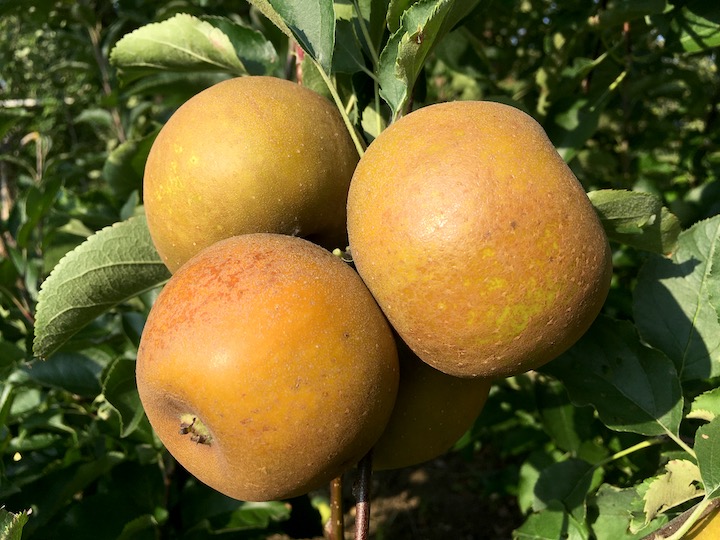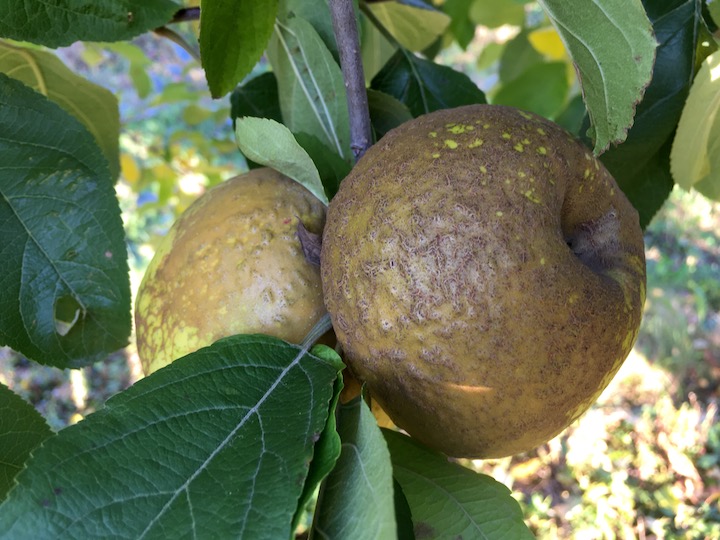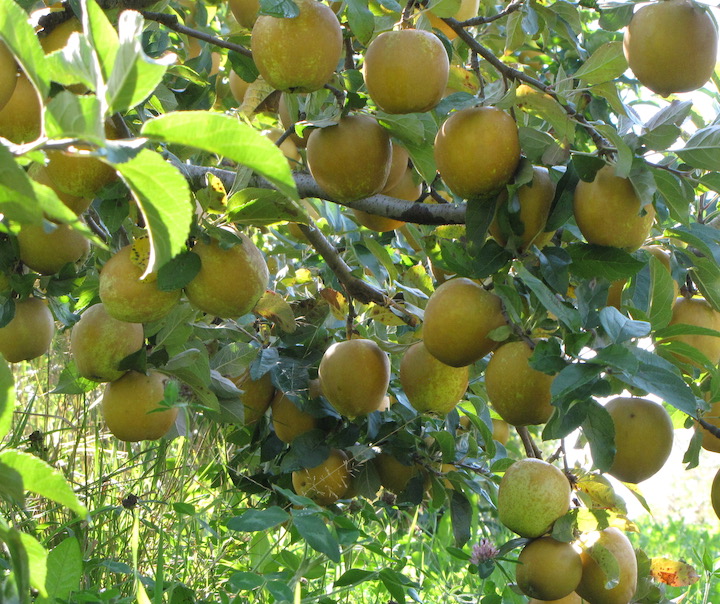
AN APPLE is the perfect walking companion, appealing to all the senses while providing a sweet, healthy energy boost.
An apple is a complete, edible package. There’s nothing to throw away but its biodegradable core.
(Who knows? An apple seed you toss today could sprout along a trail or roadside and years later be discovered as the next great apple!)
An apple is bursting with juice. Yet jostled, dropped, or tossed, it does not leak.
Staying hydrated is especially important while walking, and every apple — about 85 percent water, the same as oranges — contains a good drink.
An apple smells of sweetness and the outdoors where it was grown, melding with the earthy scents of oak, maple, and pine.
An apple can even relieve stress. My hand idly cradles the apple and rolls it around in my pocket as my mind chews over the day’s challenges. Its roundness is smooth and pleasing, fitting comfortably in my hand no matter which way I turn it.
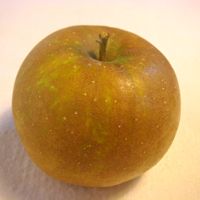
An apple orients me in time in place, over centuries and around the globe. Through the process of grafting, the Roxbury Russet in my pocket is a direct descendent of the original tree discovered in 1635, just five years after the town was founded.
Today Roxbury is a Boston neighborhood with a population of 60,000. The russeted apple named it for reminds us of Roxbury’s agrarian past.
An apple connects me to the nation in unlikely places (Stayman, from Kansas; Idared from Idaho, Red Delicious from Iowa, Arkansas Black) and the world (Gala from New Zealand, McIntosh from Canada, Fuji from Japan).
Click on the apple’s or orchard’s name to learn more about it.
* * *
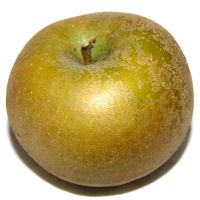
ROXBURY RUSSET remains popular today, especially for its properties in New England ciders. One of a group of russeted apples known for their relatively dull appearance but exceptional flavor, Roxbury Russet was widely grown in the 1800s, when the popularity of cider peaked.
Roxbury Russet has lots of juice and rich flavor, more sweet than tart. Like many russets, it has firm flesh and stores well, so before refrigeration it was widely shipped in barrels from ports like Portland and Boston to England and the West Indies.
Even novelty russets — tiny Pitmaston Pineapple and gnarly Knobbed Russet — have outstanding taste. Words like “nutty” and “spicy,” with hints of tea or mango (or even pineapple), are used to describe their complex flavors.
The brown or copper-colored russet is harmless to eat but often is accompanied with a texture resembling fine sandpaper. Russet is a genetic tendency in some apples and appears occasionally in others (especially around the stems of yellow apples like Golden Delicious), resulting from frost damage, bacterial growth, or other environmental factor.
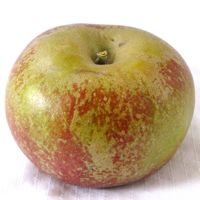
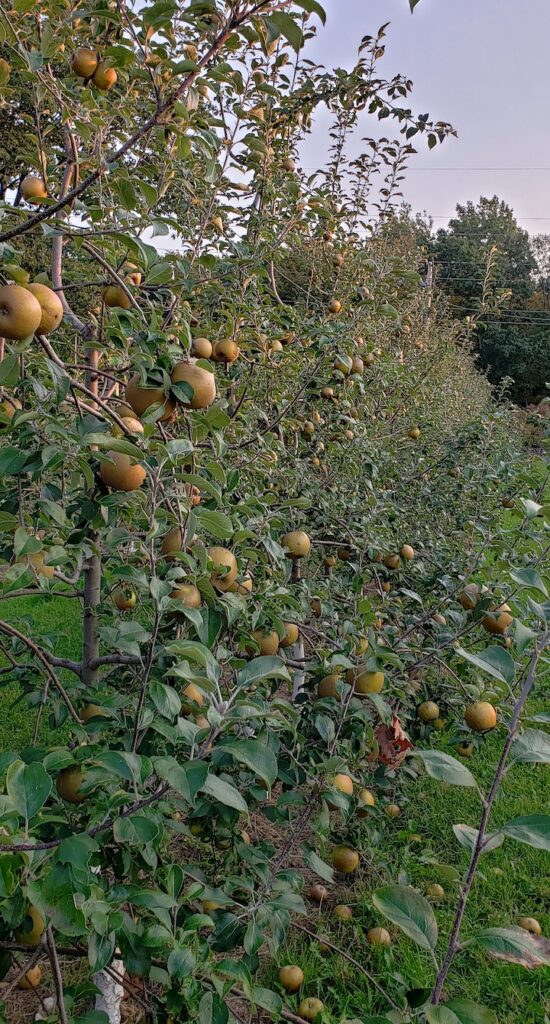
Beneath their dull exteriors, upon closer inspection the color on some russets is as complex as their flavor. Russet is sometimes layered over green (Pomme Grise), red (Orleans Reinette), or yellow (Golden Russet) skin. Ashmead’s Kernel often has a striking orange blush.
In addition to being flavorful and firm, most russets are small. Their lack of bright color and diminutive size make russets less attractive in the marketplace. Some heirlooms are notoriously difficult to grow.
As a result, most russets surviving today are well over a century old. Their persistence is a tribute to their quality.
Russets make up what they lack in commercial appeal by adding complex flavors and textures to our sensual appreciation of the apple.
There are a few large russets: European heirlooms Belle de Boskoop (Holland, 1856), and Zabergäu Reinette (Germany, 1885), and Hudson’s Golden Gem, the youngest of the russets, discovered in Oregon in 1931.
* * *
RUSSETED APPLES WILL TAKE CENTER STAGE at nearly 20 orchards and cideries in western Massachusetts during this weekend’s 28th Annual Franklin County CiderDays, one of the oldest and largest celebrations of cider in the country.
Participants include Clarkdale Fruit Farms in Deerfield and Pine Hill Orchards in Colrain. In addition to many varieties of apples, both press their own ciders.
Across the county there will be a chance to sample russeted apples for fresh eating and pressed into cider (fresh and hard), as well as late-season apple varieties like Baldwin and Suncrisp, fresh baked goods, tours, and special activities.
The weekend forecast is for temperatures in the 70s. It should be perfect weather for walking or visiting an orchard, wherever you are!
